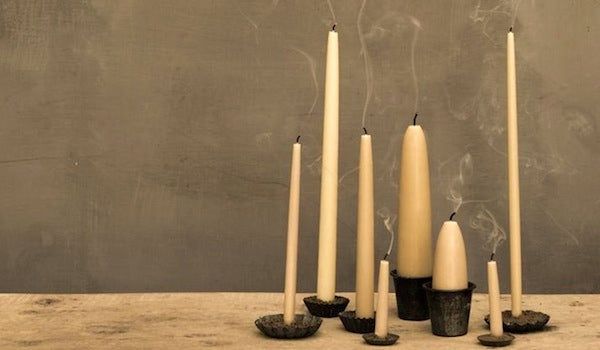
Beeswax Beauties
Guest post by Ruby Wilson

Winter is undeniably the candle's most popular season. Used for advent, carol services, simply for light, the list goes on… With that in mind we take a look at the process behind traditional beeswax candles, as designed by Folk at Home. The process begins with bees collecting nectar and pollen to make honey. As they eat honey, their bodies make wax. Subsequently, after chewing the wax with more honey, honeycombs are formed. Only then are they are removed, to be turned into candles. Initially, the colour of beeswax is white, however darkens later on with age and usage. This is particularly true if the comb is used to raise a brood. The pigmentation in the wax can result in a wide range of colours, although yellow is the most common.
The next step in the process is when the wax is melted and set into a mould. Unlike paraffin candles, beeswax candles burn at a much slower pace, so they last longer. They also don’t release carcinogens like toluene and benzene into the air. More pleasantly, they burn clean and bright while releasing a faint honey scent. Just as one would imagine ‘beeswax’ to look and feel, Folk at Home candles are comforting and warm, even without a flame. Aristocrats originally used them in the 17th century; so it is appropriate that their butterscotch colour and honey-scented aroma conjure up thoughts of rich velvets and winter robes.
These candles are made in Cumbria by some of the few remaining traditional beeswax candle makers. They are also made by British bees that are sadly decreasing in numbers. For every two candles there is only one wick, woven together from cotton threads. Their characteristic depth comes from being dipped at intervals into the melted wax. This process also means that they won’t drip in a draft – perfect to illuminate the dark winter days.
The Folk at Home candles are a part of our annual January sale, receive 20% off your purchase with the code JANUARY.
